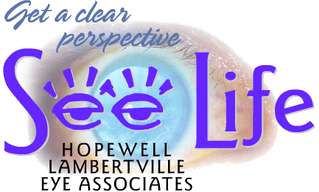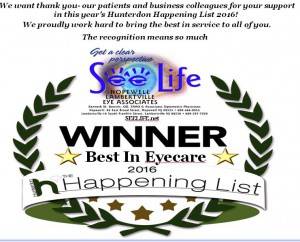5 Problems with Eyes That Women Experience

Women are at risk for eye problems, but less than 10% are aware of this concern, reports Prevent Blindness. More women than men are likely to suffer from vision issues that can threaten their sight. Here are five problems with the eyes that women face as they age.
Cataracts
The eye has a natural internal lens that focuses light into your eye. Over time, the lens may slowly become cloudy and yellow, forming a cataract. The cataract blocks light, making it difficult for people to see clearly.
Cataracts are the world’s leading cause of blindness. Since women live longer, more deal with cataract issues. Women can slow the development of cataracts by doing four things:
1. Protect eyes – The sun’s harmful rays can cause cataracts. When going outside, wear a hat with a wide brim and use sunglasses with 100% Ultraviolet (UV) protection to block the sun from your eyes.2. Lose weight – Maintaining a healthy weight helps reduce the risk of developing severe medical problems, such as high blood pressure and diabetes, that can cause cataracts.3. Eat nutritious meals – Eating plenty of fruits and vegetables helps provide vitamins, minerals and antioxidants to keep your eyes healthy.4. Stop smoking – Smoking can increase the risk of developing cataracts. One study found that stopping smoking reduces the need for cataract surgery.
Glaucoma
Glaucoma is an eye condition that damages the optic nerve. It is the second-leading cause of blindness in the United States. Damage occurs when pressure builds up in the eye.
The most common form of glaucoma is open-angle and affects both men and women. However, women are two to four times more likely to experience closed-angle glaucoma, a more dangerous form of the disease. Since women’s eyes tend to be smaller in shape than men’s, fluid drains more slowly from their eyes, which increases pressure in the eye.
Diagnosing glaucoma early is important for preventing or slowing vision loss. Here are three tips:
- Schedule regular wellness eye exams. During the appointment, the eye doctor will look inside the eye to detect subtle changes and signs of glaucoma.
- Use prescribed drops. If you are at risk for glaucoma, the eye doctor may prescribe eye drops to lower eye pressure.
- Watch for vision changes. If you detect changes in your eyes, contact your eye doctor. If pressure develops in the eye, surgery may be necessary to improve fluid drainage.
Macular Degeneration
The number one cause of vision loss for Americans over age 40 is macular degeneration. The disease gradually attacks the central part of the retina, damaging fine-detail vision. Due to life longevity, the condition impacts more women than men.
Scientists have not identified a cause for macular degeneration. However, genetics can be a contributing factor. If you notice any changes in your vision, immediately contact your eye doctor.
Women can reduce the risk for macular degeneration by
- eating low-fat meats and two servings of fish each week
- exercising for at least 30 minutes, five days every week
Hormone Imbalance / Dry Eye Syndrome
During pregnancy and menopause, women experience hormone changes that can lead to dry eye syndrome. To help women cope, doctors may prescribe hormone replacement therapy or fertility treatments. However, these treatments can affect vision, causing dry eye and corneal swelling.
Women may also experience dry eyes as they age. Their bodies may produce less oil, so it is easier for water in the eyes to evaporate.
Take these steps to protect your vision:
- Schedule regular eye exams – Make sure to tell your eye doctor about hormone changes. The doctor may prescribe lubricating drops to relieve dry eyes or insert plugs in the tear ducts to reduce fluid drainage.
- Eat nutritious meals – Select foods rich in vitamins and minerals, such as citrus fruits, leafy green vegetables, whole grains, and lean meats, which can improve vision and protect your eyes. “You are what you eat” is a scientific fact. Learn why an unhealthy diet can cause eye problems.
Diabetic Retinopathy
Diabetes can cause blood vessels in the back of the eyes to swell and leak, leading to vision loss. This condition is known as diabetic retinopathy.
Diabetic retinopathy is the leading cause of blindness in America. It affects men and women equally. Over 40% of people with diabetes have some stage of diabetic retinopathy. Many may not know that it is the leading cause of blindness.
Prevent diabetic retinopathy by eating foods low in cholesterol to keep blood sugar under control. Make sure to schedule regular eye exams so the eye doctor can monitor the healthiness of your vision.
Many people do not think about the value of their eyes until their sight is diminished or permanently impaired. Call for an ey exam at Hopewell Lambertville Eye Hopewell Lambertville Eye
Hopewell 609-466-0055 84 East Broad Street, Hopewell, NJ 08525
Lambertville 609-397-7020 16 South Franklin Street, Lambertville NJ 08530




